Backyard Gardening
Lettuce (latin word: genus Lactuca), leafy vegetable often eaten raw or preferably eaten in salad.
Below is an image of lettuce harvested from my backyard garden
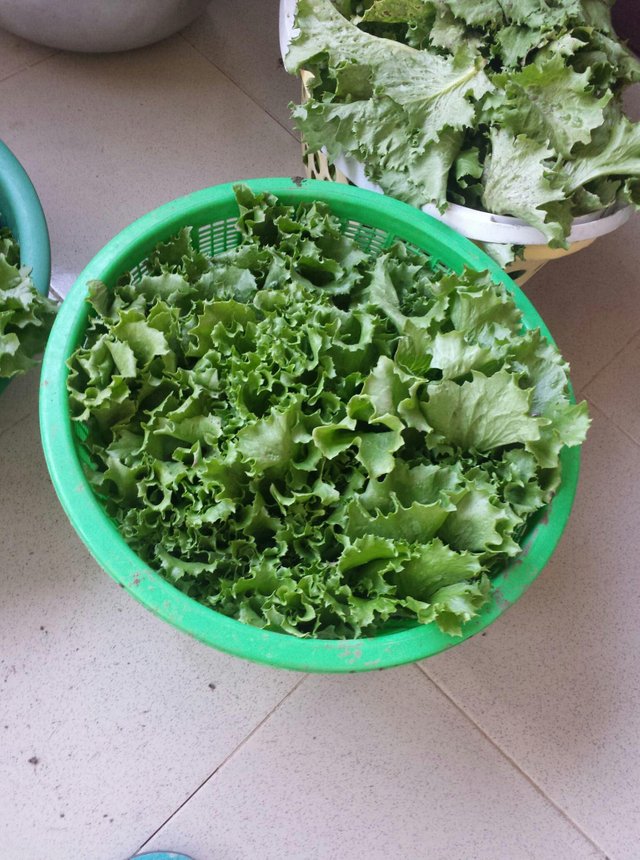
Lettuce (Lactuca sativa) is an annual plant of the daisy family, Asteraceae. It is most often grown as a leaf vegetable, but sometimes for its stem and seeds. lettuce is easily cultivated, although it requires relatively low temperatures to prevent it from flowering quickly.Lettuce is most often used for salads, although it is also seen in other kinds of food, such as soups, sandwiches and wraps; it can also be grilled] One variety, the woju (莴苣), or asparagus lettuce (celtuce), is grown for its stems, which are eaten either raw or cooked. In addition to its main use as a leafy green, it has also gathered religious and medicinal significance over centuries of human consumption. Lettuce is a rich source of vitamin K and vitamin A, and a moderate source of folate and
Cultivars (Types of lettuce )

A selection of lettuce cultivars
There are several types of lettuce, but three (leaf, head and cos or romaine) are the most common. There are seven main cultivar groups of lettuce, each including many varieties:
Leaf – Also known as looseleaf, cutting or bunching lettuce, this type has loosely bunched leaves and is the most widely planted. It is used mainly for salads.
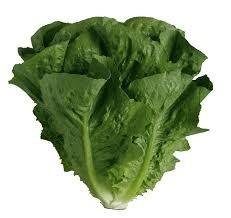
Romaine/Cos – Used mainly for salads and sandwiches, this type forms long, upright heads. This is the most often used lettuce in Caesar salads.
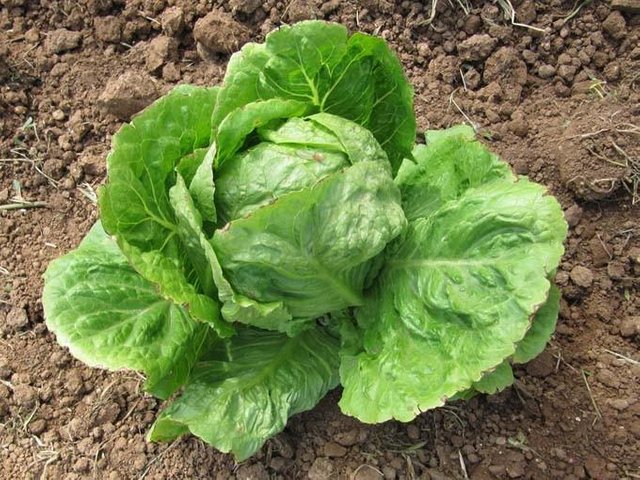
Iceberg/Crisphead - the most popular type in the US, it is very heat-sensitive and was originally adapted for growth in the northern US. It ships well, but is low in flavor and nutritional content, being composed of even more water than other lettuce types.
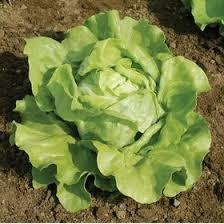
Butterhead – Also known as Boston or Bibb lettuce, and traditional in the UK as "round lettuce", this type is a head lettuce with a loose arrangement of leaves, known for its sweet flavor and tender texture.
The lettuce variety celtuce is grown for its stem, used in Chinese cooking
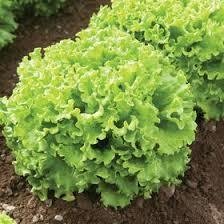
Summercrisp – Also called Batavian or French crisp, this lettuce is midway between the crisphead and leaf types. These lettuces tend to be larger, bolt-resistant and well-flavored.
Stem – This type is grown for its seedstalk, rather than its leaves, and is used in Asian cooking, primarily Chinese, as well as stewed and creamed dishes.
Oilseed – This type is grown for its seeds, which are pressed to extract an oil mainly used for cooking. It has few leaves, bolts quickly and produces seeds around 50 percent larger than other types of lettuce.
The butterhead and crisphead types are sometimes known together as "cabbage" lettuce, because their heads are shorter, flatter, and more cabbage-like than romaine lettuces.
Religious and medicinal lore
A lettuce has been claimed to be a sleep-inducing remedy for insomnia. Lettuce sandwiches (no bread) are also eaten to promote weight loss. Lettuce sandwiches (bread filled with lettuce) can also be a good food choice for the health-conscious. The lettuce sandwich (bread filled with lettuce)—which contains no meat—is mentioned in a book about vegetarian diets.
Some American settlers claimed that smallpox could be prevented through the ingestion of lettuce, and an Iranian belief suggested consumption of the seeds when afflicted with typhoid.
Folk medicine has also claimed it as a treatment for pain, rheumatism, tension and nervousness, coughs and insanity; scientific evidence of these benefits in humans has not been found. The religious ties of lettuce continue into the present day among the Yazidi people of northern Iraq, who have a religious prohibition against eating the plant.
References
Hi! I am a robot. I just upvoted you! I found similar content that readers might be interested in:
https://en.wikipedia.org/wiki/Lettuce